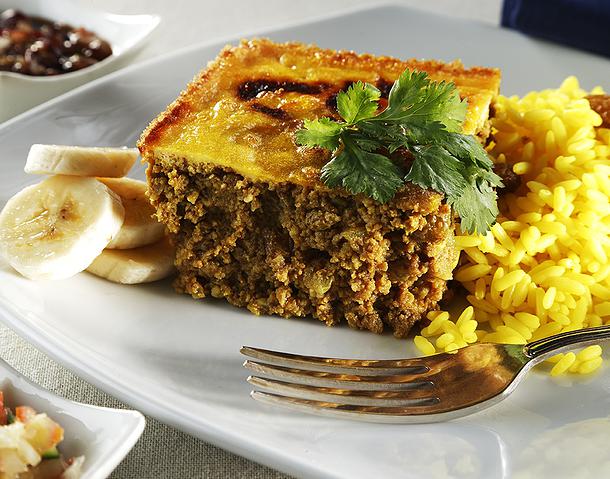Emily Fallon
Blog Post 2
Food is an essential cog in the cultural machine of a country. Food, art, tourism, history and sports shape a country’s reputation in this global society. South Africa is such a diverse nation that thrives on the various foods incorporated into their daily lives. It is similar to the United States but South Africa is a more creative approach to food. Luckily, South African food impressed me beyond belief over the past three weeks. Our professors warned us the food would be delicious, but I never imagined I would say after mostly every meal, “That was so good”! I have been introduced to multiple enticing dishes and found my adventurous side in this food industry. The food in South Africa truly parallels to the multi-faceted nature of the country. The culinary world resembles South Africa’s arch of history. The food consists of different cultures; most of which were once oppressed during apartheid. In 2016, their culinary character has united between multiple ethnicities and cultures. This is what makes South Africa so special, their ability to endure apartheid, yet create a type of consumption that fuelled the country into peace and harmony. Culturally, how far can South Africa go from here? Will their culinary manifold keep expanding?
On night number one in South Africa, our group went to the incomparable Mama Africa on Long Street, in Cape Town. I truly appreciated the waitress’s patience, as it could not have been easy for thirty-five Americans to order from a foreign menu. Options ranged between ostrich, chicken, crocodile, or curry. Many of my peers stayed safe and ordered the chicken. However, I decided to be a rebel. I ordered bobotie, a South African delicacy, which consisted of minced beef and ostrich. When my dish arrived, it came with a side of bananas. As the food fumes enveloped my nostrils, the unique South African culture began to settle in. Not only was the meal delicious, but also it was telling of the type of food we were about to enjoy. Mama Africa proved to be an influential foundation for the rest of my daring culinary experiences; I was going to dive right into the food culture in South Africa. I didn’t want to have any regrets.
In Bo Kaap, a Muslim section of Cape Town, our group enjoyed a lengthy buffet of Malay food. The meal comprised of different kinds of rice, chicken, beef, samosas, and delicious ice cream to finish. Shockingly, I loved this meal. I went into it with hesitations and worries because I had never tried Malay food. As I kept adding food to my plate, I was astonished at the variety of different spices and creativity in the dishes. It wasn’t just plain chicken; it had vegetables and looked like some type of stew. It tasted phenomenal. The Muslim community was unfortunately very affected during the apartheid years. Our tour guide mentioned Muslim communities would celebrate Christmas and other holidays with people in Cape Town. They would share food and recipes. In this sharing, they found similarities and differences; these communities found a common harmony with cooking by integrating and sharing. South Africa is terribly idiosyncratic in this sense; their culture thrives on the collaboration of culinary efforts. More importantly, different cultures were learning from each other to create a successful South African food experience for others to learn from.
While in South Africa, our program feasted over a traditional thanksgiving meal. Or at least, that is what it looked like in American terms. My favorite meal of the trip was in this Langa Township in Cape Town. During this meal, we were thrown into South African culture. Complete with an abundant culinary experience and an interactive drum concert, Langa gave us their heart that day. The cooking was spectacular; every single dish had a unique taste, look and preparation. I was baffled because it seemed like it would take forever to make twenty-six dishes. My favorite dishes included Langa specialties like pap and this corn soufflé; they also had the greatest cooked carrots I have ever tried. It was an overwhelming culinary experience but a lunch I will truly never forget. These townships are the heart and soul of South Africa. Most of their people reside in these cramped conditions yet still are able to create adventurous, delectable dishes. How are they able to create such inventive food? Their culture is so strong and vivacious. The Langa Township truly reminded me of our lovely buffet at the Johannesburg village, Lesedi. By coming full circle, I have tried food from different cultures in different areas of South Africa and found commonalities. I have never been disappointed with a meal.
Our group deliciously indulged in their culture by viewing both their artistic expression and their food. By visiting these places, we experienced their culinary styles and methods. For example, in Lesedi they cooked some meat and vegetables in front of us, seasoning them to perfection. At Mama Africa, I tasted the courage of South Africa. In Bo-Kaap, I tasted the brains of South Africa and in Langa I tasted the heart. South Africa’s culinary roots are planted in a melting pot of different cultures; by experiencing all of them in three short weeks I can conclude that this country’s culture is an integrated rainbow of culinary brilliance. Where can this nation go next? The culinary aspect will continue to bring recognition and tourism to the country, which will hopefully, over the years, aid their crippling economy.
South African dish: bobotie

